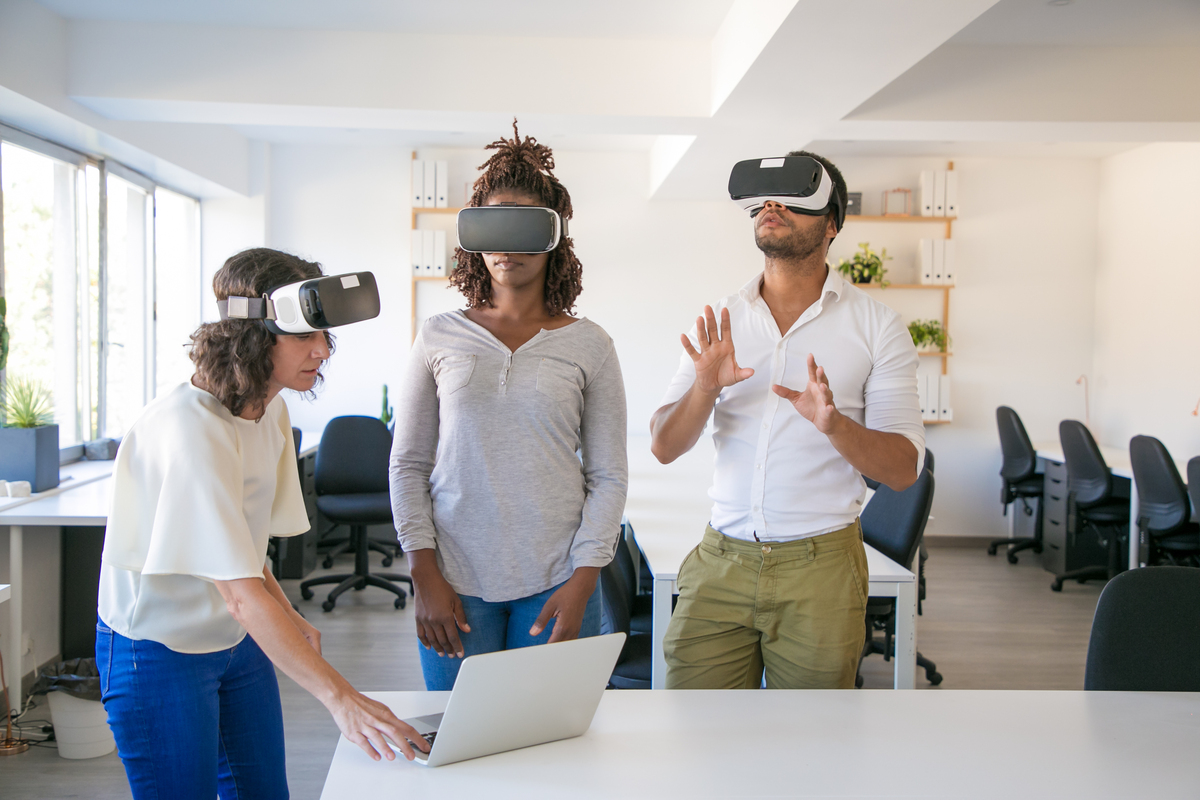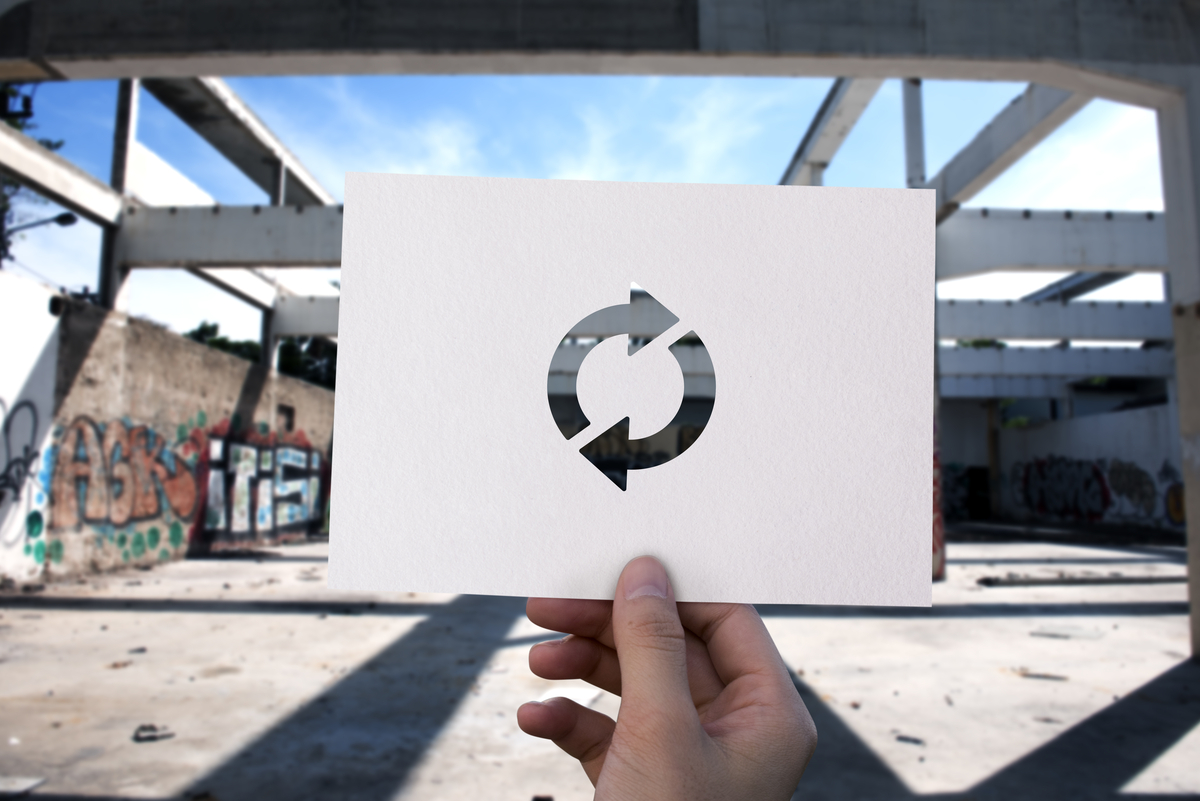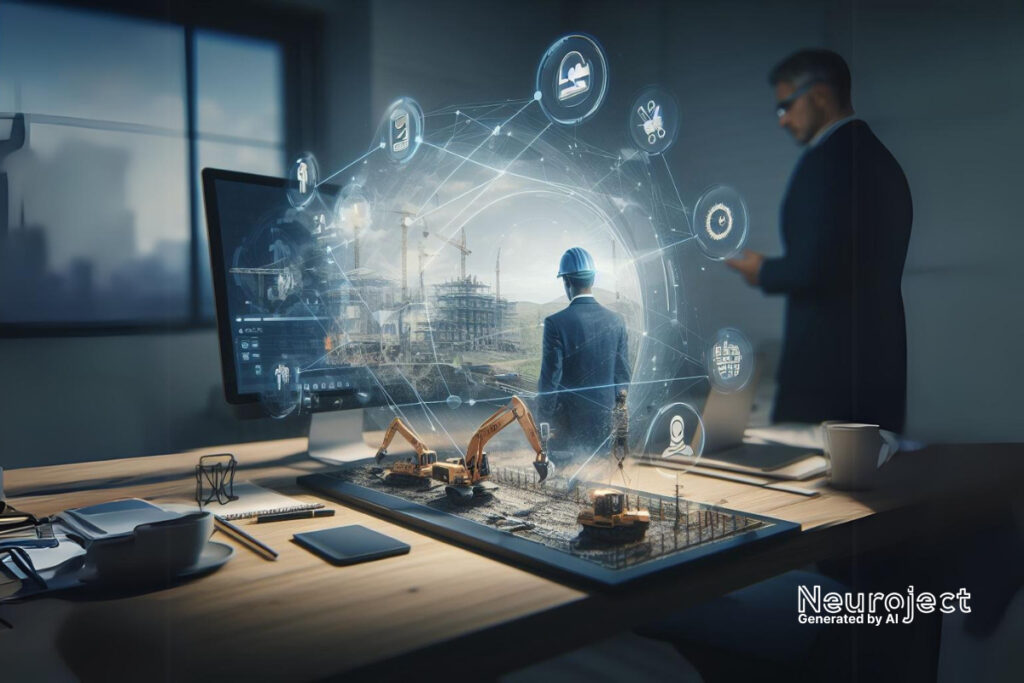Updated by Nazanin Ghodsian, 11/12/2024
Through immersive experiences that improve communication, safety, and design correctness, virtual reality (VR) is revolutionizing the construction sector. This article examines the seven main advantages of virtual reality in construction industry and how it is influencing project results.
With the help of virtual reality (VR), architects, engineers, and clients can see projects before they are constructed, providing a clear knowledge that goes beyond plans. Early design exploration and decision-making by customers is made possible by this technology, which lowers the need for expensive modifications and aids in project objective alignment.
VR is crucial for construction training and skill development in addition to design. Without the dangers of the real world, employees can safely practice operations and get to know equipment through realistic on-site simulators. By immersing clients in virtual versions of their future homes or workplaces, virtual reality also facilitates client interactions. This method ensures client satisfaction and transparency in the project process by facilitating more transparent discussions about modifications or adjustments.
To sum up, virtual reality has a revolutionary impact on construction, improving client involvement, safety, training, and project efficiency. Embracing Virtual Reality in Construction is a strategic step toward a sustainable, tech-driven future for the industry.
Table of Contents
Overview of VR or Virtual Reality in Construction Industry
A leading digital construction technology, virtual reality (VR) is revolutionizing a wide range of sectors. Immersing ourselves in the virtual world, we can conceive, design, and visualize infrastructural projects like never before.
Construction is inherently a complex field where conceptualization, planning, and execution must mesh seamlessly for successful project completion. Herein lies the power of VR in Construction; it provides a detailed, immersive representation of a planned structure, helping stakeholders visualize the end result with precision and understand potential challenges in the construction process.
By leveraging VR, architects and engineers can create three-dimensional models, making it easier to grasp complex designs. Interactive elements allow professionals to virtually “walk” through structures, aiding in identifying design flaws, ensuring safety measures, and mitigating costly errors prior to construction. Stakeholders can collaboratively explore these virtual models, making collective decisions based on a shared understanding, rather than interpreting flat, two-dimensional plans.
Suggested article for reading: Explore the Impact of Augmented Reality in Construction (2024)
Current Landscape of VR in Construction (2023)
As of 2023, the landscape of Virtual Reality (VR) in the construction industry is marked by substantial growth and increasing integration of immersive technologies into various aspects of construction projects. This section explores the current state of VR in construction, highlighting market trends, key players, and notable technologies shaping the industry.
Market Growth and Statistics
- Adoption Trends:
The adoption of VR in construction has seen a steady increase, with more companies recognizing its potential to revolutionize project planning, design, and collaboration.
- Market Size:
According to industry reports, the global VR in construction market is experiencing significant growth, with a compound annual growth rate (CAGR) reflecting the increasing acceptance of VR technologies in the construction sector.
- Increased Investments:
Construction firms are allocating more resources towards VR implementation, viewing it as a strategic investment to gain a competitive edge, enhance project efficiency, and improve client communication.
Key Players and Technologies
- Leading Companies:
Major players in the VR in construction space include tech giants and specialized firms offering VR solutions tailored to the unique needs of the construction industry.
- VR Hardware Innovations:
Companies are investing in the development of advanced VR hardware, such as headsets and smart glasses, to provide construction professionals with more immersive and user-friendly experiences.
- Software Solutions:
Specialized software platforms designed for construction applications are gaining prominence. These platforms enable the creation, visualization, and manipulation of 3D models in real-time, facilitating seamless collaboration among project stakeholders.
Innovations and Emerging Technologies
- Integration with Building Information Modeling (BIM):
The integration of VR with Building Information Modeling (BIM) is becoming increasingly prevalent. This synergy enhances the visualization of construction projects, allowing stakeholders to navigate and explore virtual models seamlessly.
- Spatial Mapping and 3D Scanning:
Advanced spatial mapping technologies and 3D scanning tools are being employed to create precise digital replicas of physical spaces. This aids in project planning, design validation, and clash detection.
- Augmented Reality (AR) and Mixed Reality (MR):
The combination of VR with AR and MR technologies is creating more comprehensive solutions. This integration enhances on-site visualization, enabling construction professionals to overlay digital information onto the physical environment.
Challenges and Opportunities
- Technical Challenges:
Despite advancements, technical challenges persist, including the need for high-end hardware and the development of more user-friendly interfaces. Overcoming these challenges presents opportunities for innovation and improvement.
- Skills and Training:
Upskilling the workforce to effectively use VR tools remains a priority. Training programs are being developed to ensure that construction professionals can harness the full potential of VR technologies.
- Scalability:
Ensuring that VR solutions are scalable for projects of varying sizes is a consideration. Companies are exploring ways to adapt VR applications for both small-scale and large-scale construction projects.
Future Outlook
- Continued Growth:
The current trajectory suggests continued growth in the adoption of VR in construction. As technology advances, the capabilities of VR solutions are expected to expand, further influencing project design, collaboration, and overall efficiency.
- Innovations in User Experience:
Ongoing developments focus on improving the user experience, making VR applications more intuitive and accessible. This includes advancements in user interfaces, gesture controls, and haptic feedback.
- Collaboration and Integration:
Increased collaboration and integration with other technologies, such as artificial intelligence (AI) and the Internet of Things (IoT), are anticipated. This collaborative approach aims to create more comprehensive and interconnected construction ecosystems.
In conclusion, the current landscape of VR in construction in 2023 is characterized by robust market growth, increased adoption, and ongoing innovations. As construction companies embrace VR technologies to enhance project visualization, collaboration, and efficiency, the industry is positioned for a transformative future where virtual experiences become integral to the construction process. The challenges faced today serve as catalysts for future advancements, ensuring that VR continues to play a pivotal role in shaping the construction industry.
Suggested article for reading: Explore the Impact of Augmented Reality in Construction
The 7 Benefits of Virtual Reality in Construction
From fostering seamless collaboration among stakeholders to enhancing safety measures and unlocking substantial cost savings, VR is reshaping the way construction professionals plan, visualize, and execute their projects. Join us on this exploration as we uncover the immense potential of Virtual Reality, and how it is propelling the construction industry towards greater innovation, efficiency, and success.
Find out how Virtual Reality is reshaping the construction industry landscape and paving the way for innovation and efficiency like never before as we explore its incredible potential.
1. Better Visualization and Planning with VR
The utilization of Virtual Reality in Construction brings a paradigm shift in the planning and visualization process. By offering an immersive and interactive 3D environment, it elevates the understanding of construction designs beyond the traditional 2D blueprints.
1. Intuitive Project Visualization: With VR, stakeholders can ‘walk-through’ virtual replicas of the planned constructions. This enables them to appreciate spatial dimensions, interior layouts, and design aesthetics in a way that 2D blueprints cannot replicate. It gives a realistic feel for the finished project before construction even begins.
2. Efficient Planning: VR technology supports real-time modifications to the design. Stakeholders can adjust and see changes immediately, enabling more dynamic and efficient planning. This capacity can save time and resources during the project execution phase, as it minimizes the need for costly adjustments after construction begins.
3. Informed Decision-Making: The realistic, interactive visualizations provided by VR enhance communication among project stakeholders, supporting informed, consensus-based decision-making. The clear visual representation helps avoid misunderstandings, ensuring everyone is on the same page regarding the project scope and design.
4. Risk Mitigation: Virtual Reality in Construction can simulate different scenarios, identifying potential issues in advance. By visualizing these risks, project teams can develop more effective mitigation strategies, leading to safer and more predictable project outcomes.
VR’s capacity to facilitate enhanced visualization and planning has clear, tangible benefits for the construction industry. The ability to visualize, plan, and modify construction designs in a realistic, interactive 3D environment leads to more effective communication, informed decision-making, efficient resource allocation, and improved risk management. This transformative technology holds the potential to redefine the future of construction planning and execution.

2. Improved Safety Training through Virtual Simulations
Virtual Reality in Construction offer trainees the opportunity to navigate through virtual construction sites, allowing them to identify hazards, understand safety measures, and learn risk mitigation strategies in a controlled environment. These simulated environments can be designed to emulate real-world scenarios, replicating potential hazards such as fall risks, structural failures, and equipment malfunctions.
Training simulators create a 3D environment where operators learn how to use their tools. Trainees also gain experience making quick decisions and overcoming unforeseen complications in real time, with no physical danger. This maximizes operators’ proficiency before they even begin operating the machinery in real life, which leads to less safety risk and minimal damage of equipment due to misuse.
Here are some key applications of VR in Construction safety training:
Interactive Hazard Identification: Virtual Reality technology can overlay virtual hazards onto real-world construction environments. This allows workers to practically learn about possible risks and build their competence in hazard recognition.
Visualization of Safety Protocols: VR in Construction offers the ability to visually demonstrate and step through safety procedures within the actual workspace. This direct, in-situ learning fosters a deeper understanding and practical knowledge of safety protocols.
Real-Time Equipment Handling Training: VR provides a unique platform to demonstrate correct equipment operation. Workers can follow interactive instructions overlaid onto actual machinery or tools, which reinforces correct usage and safety practices, thereby reducing accidents.
Simulated Emergency Response Drills: Using VR, emergency situations like fires or structural collapses can be simulated in a realistic environment. These drills help workers prepare for actual incidents, promoting swift and appropriate responses when it matters most.
In conclusion, the adoption of VR in Construction for safety training also reduces the time and resources needed for physical mock-ups and the associated risks of training on actual construction sites. In this way, VR training not only enhances safety understanding but also contributes to the overall efficiency and cost-effectiveness of safety training processes.

3. Improved Collaboration and Communication in Projects
VR in Construction provides an immersive, interactive 3D environment where project blueprints can be transformed into lifelike models. This gives construction professionals an unprecedented ability to visualize, inspect, and understand projects before a single brick is laid.
Virtual Reality in Construction enhances communication by enabling everyone involved – architects, engineers, contractors, clients, and stakeholders – to step into the digital construction site together. This shared visual language eliminates misinterpretations and miscommunications that can arise from conventional 2D blueprints. Issues can be detected and rectified at an early stage, saving valuable time and resources.
Beyond improved communication, VR provides a platform for real-time collaboration. Teams can convene in the virtual environment, allowing simultaneous interaction and modification of the model. This fosters streamlined decision-making as all parties can witness and discuss potential changes instantly, regardless of their geographical locations.
Furthermore, VR in Construction can boost safety by providing a risk-free platform for training and planning. Construction workers can navigate the virtual site, learning the layout, identifying hazards, and rehearsing complex tasks before stepping onto the actual site.
4. Enhanced Client Engagement and Satisfaction
One of the most compelling advantages of utilizing Virtual Reality in Construction lies in its potential to significantly enhance client engagement and satisfaction. It essentially bridges the gap between abstract technical plans and tangible built environments, presenting clients with an immersive and interactive experience that’s as close to the real thing as possible without physically building it.
Through VR, clients can ‘walk’ through a detailed, 3D simulation of the proposed construction, allowing them to visualize the finished product in an engaging and realistic way. It is an opportunity to explore the proposed design at different times of day, under various lighting conditions, or from different perspectives, thus granting a deeper understanding of the project.
Moreover, VR in Construction allows for real-time feedback and modifications. If a client is not satisfied with a particular aspect of the design, they can indicate the issue and see immediate changes implemented within the VR environment. This not only speeds up the decision-making process but also significantly reduces the likelihood of costly last-minute changes once physical construction is underway.
The capacity of Virtual Reality in Construction to offer this immersive, personalized, and responsive service to clients boosts their engagement in the project, ensuring they are not just passive observers but active participants. This collaborative process can dramatically increase satisfaction rates as clients feel a stronger sense of ownership over the final product, enhancing their connection to the project and trust in the construction company.
In summary, VR’s unique ability to deliver superior client engagement and satisfaction is an undeniable asset in the construction sector. It brings designs to life, facilitates real-time changes, promotes active client participation, and as a result, increases overall satisfaction and trust – a win-win situation for all stakeholders.

5. Cost Savings
The integration of Virtual Reality in Construction has opened the doors to significant financial savings in several key areas.
1. Reduction of Design Errors: A simple design flaw can sometimes cost thousands, if not millions, to correct once construction is underway. VR allows for the complete visualization and interaction with the project before a single brick is laid, significantly reducing the financial risk associated with design errors.
2. Efficient Resource Allocation: VR simulations can show how construction machinery and equipment can be best deployed on site for optimal efficiency. By doing so, it eliminates unnecessary equipment rental days, which could save thousands of dollars.
3. Training: Traditional training methods often involve the use of actual machinery, which can be both expensive and risky. Virtual Reality in Construction enables safe and cost-effective training. A trainee can learn to operate a $500,000 crane virtually without the risk of damaging the expensive equipment.
4. Streamlined Design Changes: A design change that involves moving a load-bearing wall could cost $25,000. With VR in Construction, stakeholders can visualize these changes before construction, understand their implications, and potentially modify them to be more cost-effective.
5. Travel Cost Reduction: With VR, an investor based in New York can take a virtual walkthrough of a project in Los Angeles, saving on the airfare, accommodation, and associated travel costs.
6. Minimizing Delays: By identifying problems before they happen, VR can help avoid delays that can inflate a project’s budget. For instance, early detection of a conflict between plumbing and electrical work could save a project from days of expensive delays.
By providing these detailed financial benefits, VR is proving to be an essential cost-saving tool in the construction industry.

6. Waste Reduction
Virtual Reality (VR) is shaping the construction industry, notably through significant waste reduction. Here are several applications showcasing how VR leads to more sustainable practices in this field:
1. Virtual Prototyping: For instance, during the construction of a high-rise building, an initial 3D model can be tested and adjusted in VR to prevent design errors. This pre-construction tweaking saves materials that might otherwise be wasted on alterations or rectifications during physical construction.
2. Efficient Material Ordering: By simulating a structure’s components, VR can compute the exact quantity of materials required. This exactness was utilized in the construction of the Louvre Abu Dhabi, where VR helped avoid over-purchasing and the resultant waste of unused steel and concrete.
3. Project Visualization: Implementing VR in Construction for project walkthroughs allows teams to preview and troubleshoot potential issues. An example is the Øresund Bridge project where VR was employed to visualize construction scenarios, helping the team foresee and sidestep potential issues, reducing waste from costly errors.
4. Worker Training: Virtual Reality in Construction can provide practical training simulations, negating the need for physical mock-ups. As seen in a recent crane operation training program, virtual environments facilitated realistic learning without the waste usually associated with traditional training.
5. Facility Management: Post-construction, VR can be used to visualize maintenance needs accurately. For instance, VR was instrumental in the upkeep of the Sydney Opera House, predicting repairs and maintenance accurately, avoiding unnecessary part replacements.
6. Demolition Planning: VR in Construction can aid in strategizing efficient demolition, optimizing material recovery and reuse. The controlled demolition of the old Yankee Stadium used VR for pre-planning, ensuring maximum recovery and minimum waste.
In summary, VR is revolutionizing the construction industry, promoting efficient resource utilization and substantially reducing waste. This positive evolution impacts not only the industry’s profitability but also contributes significantly to environmental sustainability.

Suggested article for reading: Wastes in Lean Construction: A Comprehensive Guide
7. Facilitating Remote Construction Management – The experience of COVID-19
In the context of the construction industry, Virtual Reality (VR) has emerged as a transformative tool, particularly in facilitating remote construction management. This has become especially relevant in the face of challenges like the COVID-19 pandemic, where physical presence on-site was often impossible.
Remote construction management involves overseeing construction projects from a distance, utilizing technology to ensure progress and quality. VR in Construction, with its immersive and interactive capabilities, offers a means to do this more effectively. It allows construction managers to virtually visit and explore sites in three dimensions, enabling a comprehensive understanding of the site conditions and ongoing work, regardless of their physical location.
This virtual “walk-through” ability was vital during the pandemic, enabling managers to conduct inspections, monitor project progress, and detect potential issues without the need for physical site visits. This not only adhered to safety measures but also saved significant time and costs associated with travel.
Communication, often challenged in remote scenarios, also saw significant improvement with Virtual Reality in Construction. Project teams scattered across different locations could simultaneously interact with the 3D models of the construction project. This allowed for effective discussions, swift decision making, and instant updates on project modifications, reducing the chances of misunderstandings and consequent errors.
Furthermore, VR’s capacity to simulate potential safety hazards and construction processes allowed for better risk management, even when in-person safety inspections were not feasible. By predicting and mitigating risks beforehand, a safer working environment was ensured, protecting the workforce even in the face of a global health crisis.
The experience of the pandemic highlighted the importance of VR in enabling remote construction management. As the construction industry adapts to a world that increasingly values digital and remote capabilities, Virtual Reality in Construction stands as a crucial tool, making remote construction management more efficient, effective, and safer.
Suggested article for reading: Construction Monitoring Solutions: Your Complete Guide
Looking Ahead: The Future of Virtual Reality in Construction
One of the most exciting prospects of VR in Construction is its ability to revolutionize the design process. Imagine architects and engineers collaborating in a virtual environment, effortlessly creating and modifying designs in real-time. VR will allow them to immerse themselves in a lifelike representation of the project, exploring various design iterations and instantly visualizing the impact of changes. This dynamic and interactive design process will lead to innovative, optimized structures that blend aesthetics with functionality.
Beyond design, VR will play a crucial role in enhancing construction project management. With the help of VR, project managers will be able to virtually simulate the entire construction process, meticulously planning and coordinating every aspect. They can identify potential clashes or logistical challenges in advance, optimizing workflow and avoiding costly delays. Real-time project monitoring through VR will provide managers with a comprehensive overview of the site, enabling them to make informed decisions and ensure seamless progress.
In terms of safety, VR will be a game-changer. Construction sites can be hazardous environments, but VR will allow workers to undergo immersive safety training. They can experience simulated scenarios that replicate potential dangers, equipping them with the knowledge and skills to respond effectively. This proactive approach to safety training will significantly reduce on-site accidents, safeguarding the well-being of construction workers.
Another exciting application of VR in Construction is in the realm of client engagement. VR will enable clients to step into a virtual representation of their future project, providing a realistic sense of scale, space, and ambiance. They can explore different finishes, lighting options, and furniture arrangements, making informed decisions before construction commences. This immersive client experience will foster a deeper sense of connection and satisfaction, leading to stronger relationships and repeat business.
As we venture into this future where Virtual Reality in Construction permeates every aspect of this industry, we are on the cusp of a paradigm shift. The industry will become more efficient, innovative, and safer, with projects tailored to client preferences and executed seamlessly.
FAQs
What role does Virtual Reality (VR) play in improving project design and planning in construction?
- Answer: VR in construction aids in the creation of interactive, immersive 3D models of projects, enabling teams to see plans and make changes at an early stage. This improves teamwork, lowers miscommunication, and guarantees more precise project results.
How does VR technology reduce construction risks and improve safety?
- Answer: Workers and supervisors may practice and get ready for any risks before they set foot on the job site thanks to virtual reality (VR) simulations of construction sites. In addition to improving worker safety, this proactive approach to risk management aids in identifying hazards that conventional planning techniques could miss.
Can Virtual Reality help streamline the construction process?
- Answer: Yes, by facilitating better teamwork, virtual reality helps to expedite the building process. By facilitating real-time virtual testing and changes, it lowers errors, cuts down on the need for physical prototypes, and expedites project schedules.
How does VR facilitate better communication between construction stakeholders?
- Answer: By offering a common virtual area where clients, contractors, and architects can work together, virtual reality enhances communication. This interactive and visible method simplifies complicated ideas and guarantees that all parties involved are on the same page prior to the start of construction.
What are the potential cost savings of using VR in construction projects?
- Answer: By avoiding expensive mistakes, reducing rework, and streamlining the design and planning stages, virtual reality (VR) can drastically cut expenses. Virtual reality (VR) helps save delays and expensive design changes by providing virtual walkthroughs and alterations prior to the start of actual construction.
How is VR changing the way construction workers are trained?
- Answer: Because it provides realistic simulations, virtual reality is revolutionizing building instruction. Employees can learn how to operate machinery, negotiate construction sites, and handle emergencies without running the risk of getting hurt by experiencing real-world situations in a safe setting.
Suggested articles for reading:
Sustainable Construction Technology; Ultimate Guide in 2024
Resilient Construction; 2024 Guide
What is Eco Friendly Construction & Why is it important? 2024 Guide
What are Construction Surfaces? Your 2024 Guide
Nearly Zero Energy Buildings (NZEB); Ultimate Guide 2024
Resources:
For all the pictures: freepik




